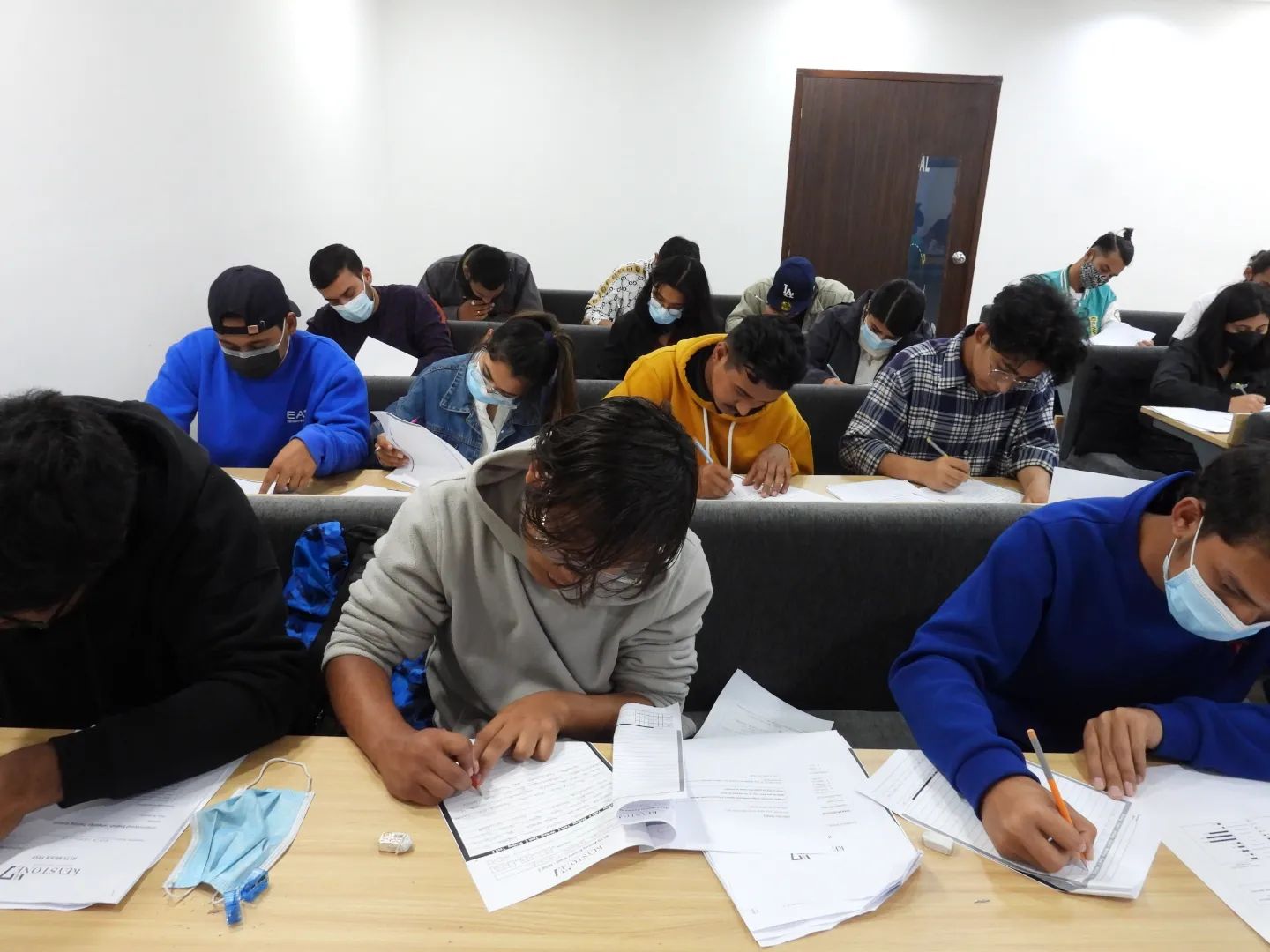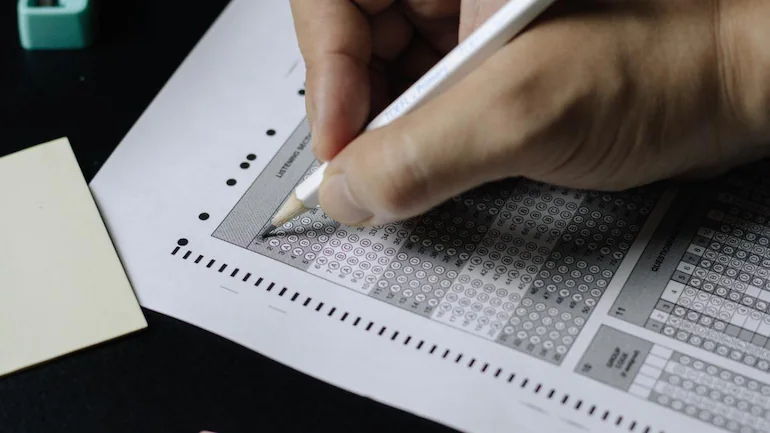Common Entrance Examination (CEE) is now the major entrance examination for the participants willing to study medical education in Nepal. CEE is a part of medical entrance in Nepal organized by Medical Education Nepal (MEC). MEC is the organ of the Ministry of Education (MOE).
Earlier MOE used to take an examination of all the medical education-related subject courses in Nepal. Later due to work division and partition of regulative bodies, the responsibility is handed over to a new department and it is called MEC now.
Now, MEC carries out entrance examinations for all the medical entrance appearing participants. the participants must be registered by filling the form provided by MEC. After submitting the form for registration of entrance, an admit card is provided to the participants.
This makes the participants eligible for the entrance examination carried out by MEC. Then the entrance examination date is fixed by the MEC.
After the successful examination of MEC, the result publishing date is fixed and the result is published. Finally, a participant is changed to a medical student.
CEE Questions and Answers PDF Nepal
| File Information | Download File |
| CEE Question Paper Nepal Download | Download |
CEE Nepal Questions and Answers 2021
1. Which of the following is correctly matched?
a) Traumatology – study of hairs
b) Splanchnology – study of joints
c) Tectology – study of structural organization
d) Sitology – study of whale
Find BEST ENTRANCE BOOK FOR CEE Preperation
2. The mammals evolved from the reptiles in the:
a) Creataceous
b) Triassic
c) Devonian
d) Carboniferous
3. What was the principal missing element in Darwin’s concept of evolution?
a) Knowledge of heredity and variation
b) Concept of missing link
c) Convincing of fossil records
d) Concrete evidence for the operation of natural selection
4. Nearest ancestor of Homo sapiens is:
a) Neanderthal man
b) Java ape man
c) Cro-magnon man
d) Peking man
5. Contractile vacuole is present in:
a) marine protozoans
b) fresh water protozoans
c) both a & b
d) parasitic protozoans
6. Silicoblast is one of the:
a) Porocytes
b) Scleroblasts
c) Thesocytes
d) Calcoblast
7. Gyanecophoric canal is found in some members of:
a) Cestoda
b) Trematoda
c) Turbellaria
d) Aphsmida
8. Embryonated eggs of Ascais is:
a) An egg with gastrula
b) An egg after 2nd moult
c) An egg with juvenile
d) An unfertilized eggs
9. Body with distinct head and segmented body bears parapodia are the characteristic features of class:
a) Polychaeta
b) Oligochaeta
c) Hirudinea
d) Archianeelida
10. Housefly has:
a) 1 pair of wings
b) 2 pairs of wings
c) 3 pairs of wings
d) None
11. Axial gland is the other name of heart in:
a) Molluscs
b) Echinoderms
c) Crustaceans
d) Annelids
12. Foramen of Panizzae is associated with:
a) brain of reptile
b) lung of lizard
c) brain of rabbit
d) heart of lizard
13. Recurrence of high temperature in malaria at intervals is due to completion of:
a) Erythrocytic schizogony
b) Sporogony
c) gamogony
d) Exo-erythrocytic schizogony
14. Motile, elongated zygote of Plasmodium is found in
a) RBC of man
b) Gut of mosquito
c) Liver of human
d) Salivary glands of mosquito
15. Septal nephridia of earthworm poured into:
a) Buccal cavity
b) Intestine
c) pharynx
d) body surface
16. Supra-pharyngeal nerves in earthworm:
a) 1 pair
b) 4 pairs
c) 8 pairs
d) 12 pairs
17. In earthworm, larger pair of seminal vesicles is located in segment:
a) 10th
b) 11th
c) 12th
d) 13th
18. The phenomenon of neoteny leading to a axolotl larva is exhibited by:
a) all amphibians
b) all birds
c) some birds
d) some amphibians
19. In frog, they gray crescent is visible in
a) ovulated egg
b) unfertilized egg
c) fertilized egg
d) immature egg
20. Spiral valve in heart of frog is present in:
a) sinus venosus
b) truncus arteriosus
c) auricle and ventricle
d) right auricle
21. Paneth’s cells are found in:
a) Crypts of Liberkuhn
b) Peyer’s patches
c) Organ of corti
d) Islets of langerhans
22. Most of Carbondioxide from cell respiration is transported in the form of:
a) carbonic acid
b) Bicarbonates of K and Na
c) Sodium bicarbonate
d) dissolved Carbon dioxide
23. The internal carotid artery:
a) supplies impure blood to kidney
b) supplies oxygenated blood to brain
c) brings impure blood from the brain
d) supplies oxygenated blood to heart
24. Unique feature of pectoral girdle is:
a) Acetabulum
b) Foramen of magnum
c) Glenoid cavity
d) Olecranon process
25. Which membrane is a part of embryonic contribution to placenta formation?
a) Allantois
b) Yolk sac
c) Chorion
d) Amnion
26. Glucose and 75% water is absorbed in:
a) PCT
b) DCT
c) Collecting tubule
d) loop of Henle
27. Action potential in nerve cell is created by:
a) potassium ions
b) chloride ions
c) sodium ions
d) calcium ions
28. The tectorial membrane is found in:
a) the eye of frogs
b) the eye of mammals
c) the ear of mammals
d) the tongue of frogs and mammals
29. Which of the following is responsible for ‘calcification of bones’ by stimulating osteoblastic activity?
a) Insulin
b) ADH
c) Parathormone
d) Thyroxine
30. The expulsion of completely, developed foetus from the uterus is known as:
a) ovulation
b) oviposition
c) Gestation
d) parturition
31. Step ladder pattern of fever is present in
a) Typhoid
b) Tuberculosis
c) AIDS
d) Cancer
32. Testis is connected to the abdominal cavity by:
a) Inguinal canal
b) Gubernaculums
c) Rete – testis
d) Laurer’s canal
33. Lymphocytes that activate B cells and T cells are:
a) Activator B cells
b) Cytotoxic T cells
c) Macrophages
d) Helper T cells
34. Which of the disease is not transmitted by housefly?
a) Typhoid
b) Yellow fever
c) Cholera
d) Dysentery
35. The outermost layer of skin called stratum corneum is composed by:
a) completely dead and keratinized cells
b) living and most actively dividing cells
c) most of dead keratinized cells but some living cells
d) living keratinized cells
36. Nissl granules are found in cyton of nerve cells. These granules are made up of:
a) Proteins
b) DNA
c) Amino acids
d) RER
37. Multi-unit smooth muscles occur on the walls of:
a) stomach
b) intestine
c) large blood vessels
d) urinary bladder
38. Tendons and ligaments are:
a) epithelial tissue
b) muscular tissues
c) fibrous connective tissue
d) connective tissue
39. Which of the following is not adaptive feature in volant adaptation of birds?
a) Uricotelic excretion
b) Preen gland
c) Arteodactyly
d) Short tail
40. The daily cycle of a activity that occur over a 24 hours period of time is called as:
a) Taxis behaviour
b) kinesis behaviour
c) Circadian rhythm
d) stimulus response
41. Light microscope has
a) single lens
b) two lens
c) no lens
d) illuminance by light
42. A bacterium containing tuft of flagella at both ends is called
a) lophotrichous
b) amphitrichous
c) cephalotrichous
d) peritrichous
43. Naked virus does not contain
a) capsid
b) capsule
c) envelope
d) nucleoid
44. Little leaf of cotton is caused by
a) viroid
b) bacteria
c) fungi
d) virus
45. Universal pigments of all algae are
a) chlorophyll-a and xanthophylls
b) chlorophyll-a and carotene
c) chlorophyll-b and carotene
d) chlorophyll-a and chlorophyll-b
46. During zygospore germination in Mucor
a) only meiosis take place
b) only mitosis take place
c) meiosis is followed by mitosis
d) mitosis is followed by meiosis
47. The perichaetial leaf is
a) covering of archegonia
b) covering of antheridia
c) covering of capsule
d) sporophytic structure
48. Frond is
a) diploid
b) haploid
c) haploid or diploid
d) triploid
49. The wood of Cycas is
a) monoxylic
b) porous
c) pycnoxylic
d) manoxylic
50. Strawberry reproduces through
a) seed
b) root
c) stem
d) leaf
CEE Question Paper 2021 Nepal
Medical Entrance Exam Question Papers with answers PDF in Nepal can be found in this article and major things solved in this post are like below:
- CEE Model Question Paper in Nepal
- Medical entrance exam question papers with answers pdf in Nepal
- Entrance exam questions Nepal
- CEE Model Question Paper in Nepal
- CEE question paper 2021 Nepal
- KU MBBS entrance question papers with answers


Nice
Hey this is great!!
nice
How can we find the right answer
How can we find the right answer
It’s great . Thanks
nice blog post. keep it up.
nice blog post. keep it up.
nice blog post. keep it up.
nice blog post. keep it up.
nice blog post. keep it up.
nice blog post. keep it up.
nice blog post. keep it up.
nice blog post. keep it up.
nice blog post. keep it up.
nice blog post. keep it up.
nice blog post. keep it up.
nice blog post. keep it up.